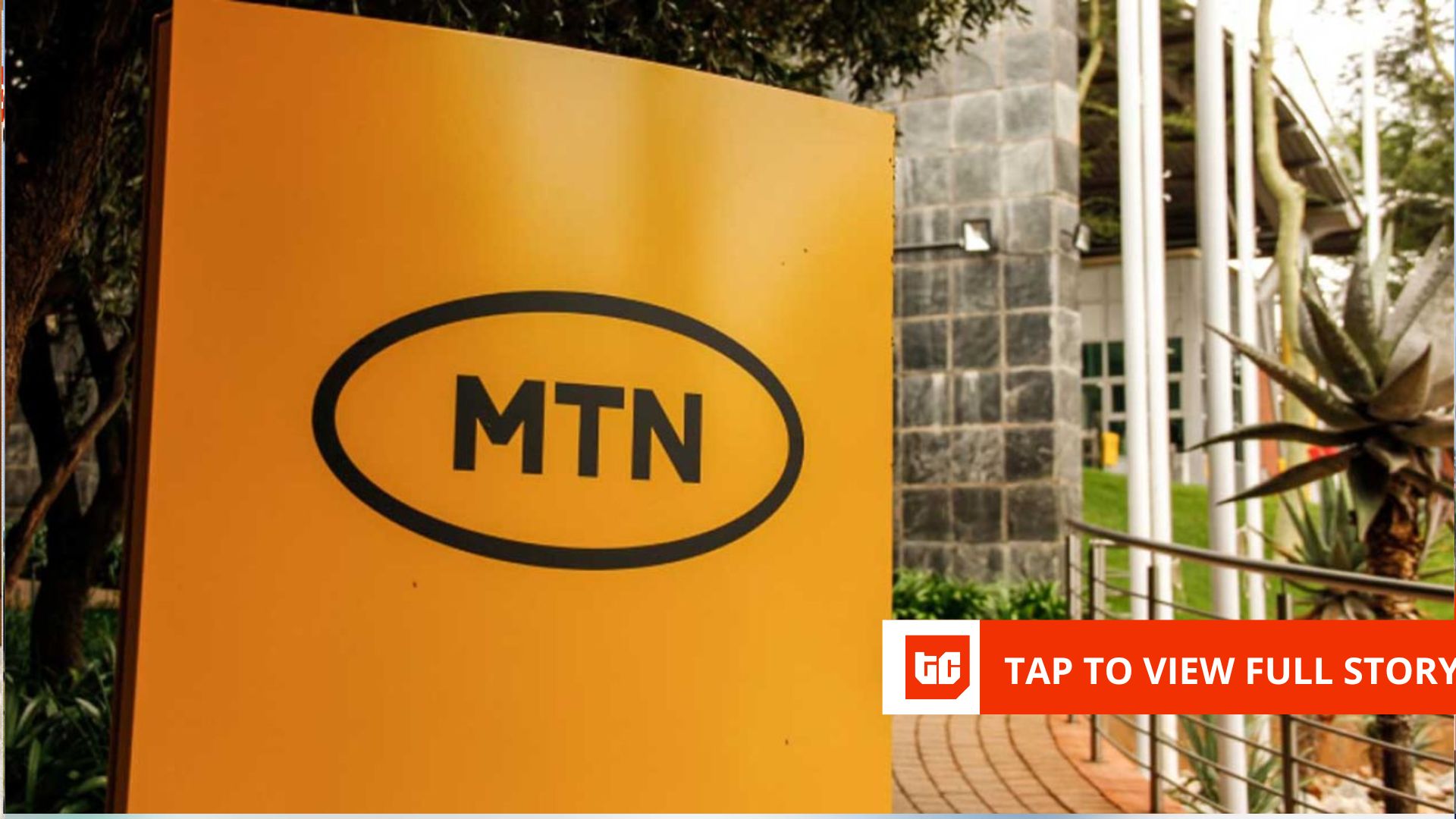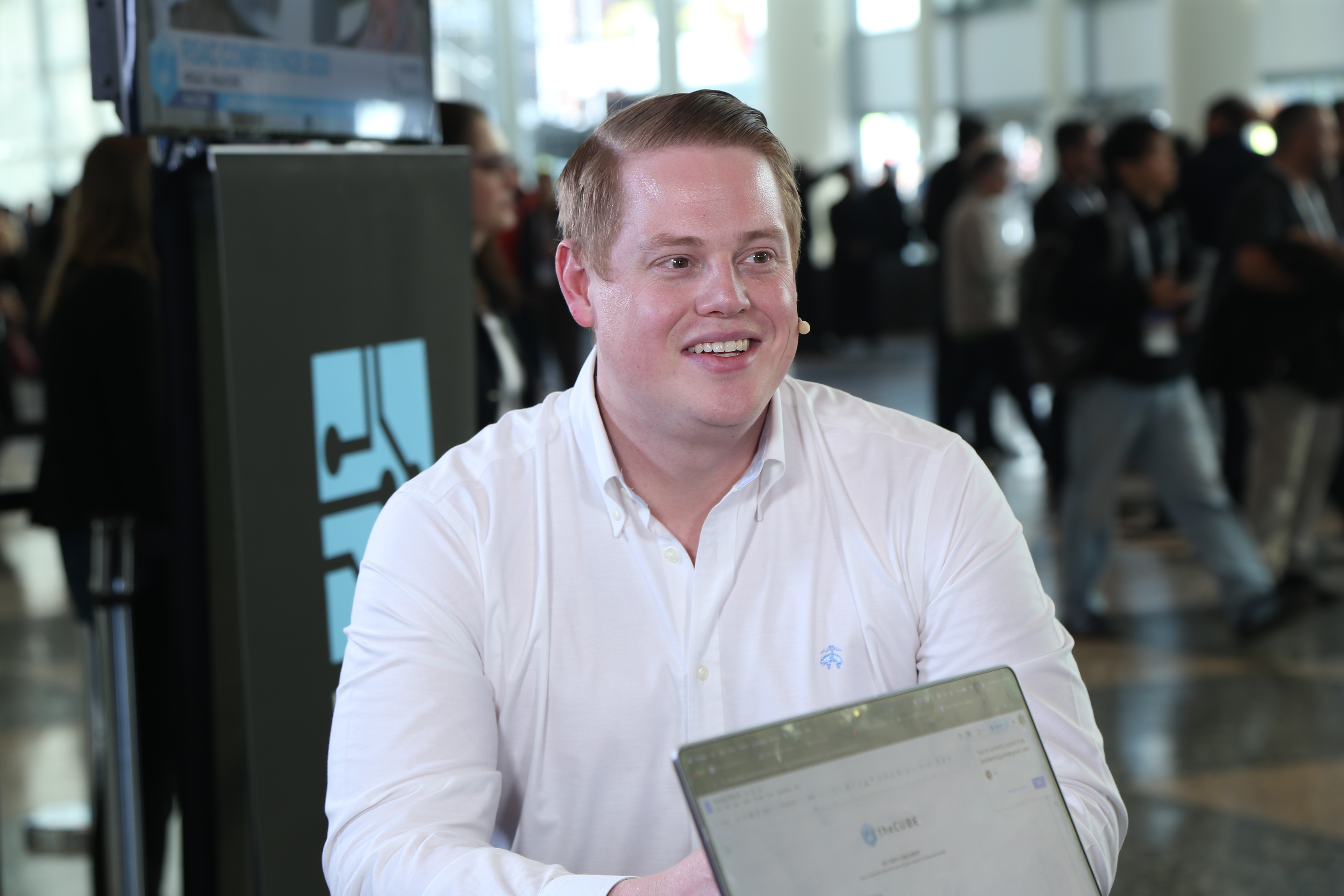Enterprises are rethinking their cloud foundations as artificial intelligence accelerates demand for flexibility, speed and smarter infrastructure. In the race to modernize, multicloud and hybrid strategies are becoming the preferred playbook.
Companies are realigning cloud investments to support faster development, minimize vendor lock-in and meet data sovereignty requirements, with Google LLC playing a key role in that evolution. The shift is already widespread, according to theCUBE Research’s Paul Nashawaty.
TheCUBE Research’s John Furrier, Paul Nashawaty, Savannah Peterson and Dave Vellante discuss how AI is driving innovation in cloud infrastructure.
“I think the big area of growth for Google right now is we’re seeing it in our own research that 94% of organizations are using two or more clouds [and] 65% are using four or more clouds,” he said. “They have to adopt the multicloud hybrid cloud approach. GKE is a way to do this, to harmonize this across the platforms [and] make sure that it’s working.”
During Google Cloud Next, Nashawaty joined fellow analysts John Furrier, Savannah Peterson and Dave Vellante for an exclusive broadcast on theCUBE, News Media’s livestreaming studio. They spoke with leaders shaping the future of AI across insurance, infrastructure and healthcare, including Google, Salesforce Inc., Chubb INA International Holdings Ltd., Deloitte Consulting LLP and more. (* Disclosure below.)
Here are three key insights you may have missed from theCUBE’s coverage:
1. Google and Chubb pair automation with cloud telemetry to reinvent cyber underwriting.
Insurers need real-time insight into cloud security postures to keep pace with modern threats. As enterprises adopt multicloud and hybrid strategies, Google Cloud’s expanded Risk Protection Program delivers just that, according to Monica Shokrai (pictured, right), head of business risk and insurance for Google Cloud at Google. With new partners, including Chubb and Beazley PLC, the program combines verified controls and automated metrics to improve risk evaluation and pricing.
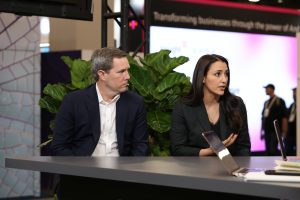
Google’s Monica Shokrai and Chubb’s Matt Prevost talk with theCUBE about Google Cloud’s expanded Risk Protection Program and modern cyber insurance challenges.
“One of the things that we’re doing with the program is driving us to a place where there’s more automated underwriting and there’s an ability for the same metrics that a [chief information security officer] is looking at to manage their own risk,” Shokrai told theCUBE during the event. “Those same metrics are being used by the cyber insurance industry.”
Insurers such as Chubb now incorporate threat intelligence and continuous verification tools into their models, moving away from outdated forms and guesswork. That shift helps underwriters align policies to real-world risks and encourages better customer behavior, according to Matt Prevost (left), executive vice president and chief underwriting officer for global cyber at Chubb, who joined Shokrai during the interview.
“Instead of a subjective control, we now have an objective control that continuously changes over time,” he told theCUBE. “That’s what is valuable to underwriting and valuable to us as we underwrite risks.”
The program also helps small and midsize businesses close critical security gaps. Built-in controls tied to Google Cloud services reduce the frequency of claims and make policies more accessible to under-resourced organizations, Shokrai added.
“The insurance industry is starting to come up with these statistics that say that Google Cloud customers have less claims than other customers,” she said. “One is if you’re using Google Workspace versus competitors, you have 54% less claims. That technology use matters, especially for SMBs that don’t have dedicated big security teams.”
With over 30 countries now participating, the Risk Protection Program is becoming a global blueprint for how cloud and insurance providers can work together to reduce both the likelihood and severity of cyberattacks. Its growth reflects a broader push toward multicloud and hybrid strategies that connect risk management to infrastructure decisions. The shift from “shared responsibility” to “shared fate” is redefining accountability, Shokrai explained.
“When we think about insurance, it’s more part of the holistic approach to how we think our customers should think about security, ultimately driving down risk as much as they can,” she said. “But when there’s residual risk, having options through insurance to cover that.”
Here’s theCUBE’s complete interview with Monica Shokrai and Matt Prevost:
2. Salesforce’s Agentforce supports multicloud and hybrid strategies with guardrails, Gemini and interoperability for AI at scale.
Moving AI from pilot to production demands a new kind of infrastructure: One that earns trust at every step. Salesforce is responding to that need with Agentforce, an architecture built to help enterprises move from experimentation to reliable, repeatable outcomes. The system is particularly well-suited for multicloud and hybrid strategies, with structured task roles, permissioned data access and embedded instructions. Powered in part by Google Gemini, the system reduces hallucinations and operational drift, according to Susan Emerson, senior vice president for AI product and global COE at Salesforce.
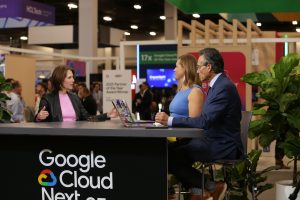
TheCUBE analysts talks with Salesforce’s Susan Emerson about the company’s approach to agentic AI and its collaboration with Google Cloud.
“What was very next level for people was the ability to add guardrails and instructions, because so many people at that point in their AI journeys were managing for control and hallucinations,” she said during the event. “That simple architecture opened the minds of everyone in terms of, ‘We can go further than we thought. The use case list is wider.’”
Looking ahead, Salesforce is enabling a new form of interoperability: agent-to-agent communication across disparate systems. This kind of cross-platform coordination is foundational for multicloud and hybrid strategies, allowing enterprises to build workflows that span ecosystems, according to Emerson.
“What if you had to get deep into a supply chain and that supply chain was in a different ecosystem and you had this agent-to-agent cross-boundary interoperability where each agent has essentially a business card of, ‘Here’s who I am, here’s what I know, here’s what I’m permissioned to do,’” she said. “This whole new ecosystem will allow for scale, inter-op and just time money takeout.”
The big shift is in mindset. Enterprises must stop dabbling in proof-of-concept territory and start treating AI as a production-grade capability, according to Emerson. The technology is ready — now it’s time for business leaders to get serious.
“What I hope is that we have even more examples of what we saw on the stage today,” she said. “It’s a rally cry, a call to action that this is the year of production scale, folks. Stop messing around with points of concepts you don’t care about. Find something to fix in your business and go because the technology is ready.”
Here’s theCUBE’s complete interview with Susan Emerson:
3. The future of infrastructure is saving lives — from enterprise speed to clinical precision.
As enterprise AI scales, infrastructure must evolve to meet extreme performance demands without adding complexity. Google Cloud’s latest storage innovations, including Hyperdisk ML and Exapools, enable high-throughput, low-latency access for massive AI workloads. These systems unify compute, storage and software to eliminate bottlenecks and accelerate model deployment across hybrid environments, supporting multicloud and hybrid strategies for large-scale AI workloads, according to Nirav Mehta, senior director of product management at Google Cloud Compute.
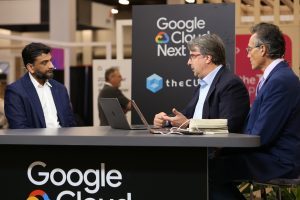
Google Cloud Compute’s Nirav Mehta talks with theCUBE about how AI storage solutions and integrated infrastructure technologies are accelerating enterprise AI adoption.
“If there’s one thing I want to really sum up is that we are really about workload optimized infrastructure,” he told theCUBE during the event. “Customers are expecting us to take all the Google know-how of the last 20 years, build custom hardware, optimize software, commercial models and all the at-scale inference application experience, and deliver a system because it’s all about faster time to value.”
In healthcare, AI’s potential comes alive through precision diagnostics. At the Mayo Clinic, clinicians use AI to turn brain scans into actionable insights, scaling expert-level interpretation of neurological conditions such as Alzheimer’s and dementia. The program, developed with Google Cloud, addresses the nationwide shortage of specialists and provides diagnostic support in regions where expertise is limited, according to David Jones, director of the Neurology Artificial Intelligence Program at the Mayo Clinic.
“When I look at a brain image, like an FDG PET scan of the brain, I can tell you a lot about what’s going on with that patient, and that really informs my medical decision-making, the diagnosis, the prognosis [and] the treatment,” Jones explained during the event. “But not a lot of people can look at that scan. If you digitize that brain scan and then connect Mayo Clinic knowledge to it, you can then deliver that to anywhere where a brain scan takes place. Actually, the tool increases accuracy of reading these things by about three to five times, and you can do it about 50% faster.”
To deliver this kind of impact at scale, healthcare institutions need more than technology — they need transformation. Deloitte’s partnership with the Mayo Clinic bridges clinical expertise and cloud engineering to design AI-powered tools that work in real-world environments. The collaboration reflects a broader enterprise shift toward cross-functional innovation and operational agility, according to Gopal Srinivasan, partner at Monitor Deloitte at Deloitte, who joined Jones during the interview.
“I’ve spent about 25 years as a business transformation consultant trying to bring the latest in technology and helping businesses transform themselves so they can be more agile, serve their stakeholders better and obviously be profitable in doing that,” he told theCUBE. “This is what I’m really focused on right now.”
Here’s theCUBE’s complete interview with David Jones and Gopal Srinivasan:
To watch more of theCUBE’s coverage of Google Cloud Next, here’s our complete event video playlist:
https://www.youtube.com/watch?v=videoseries
(* Disclosure: TheCUBE is a paid media partner for Google Cloud Next. Neither Google Cloud, the primary sponsor of theCUBE’s event coverage, nor other sponsors have editorial control over content on theCUBE or News.)
Photo: News
Your vote of support is important to us and it helps us keep the content FREE.
One click below supports our mission to provide free, deep, and relevant content.
Join our community on YouTube
Join the community that includes more than 15,000 #CubeAlumni experts, including Amazon.com CEO Andy Jassy, Dell Technologies founder and CEO Michael Dell, Intel CEO Pat Gelsinger, and many more luminaries and experts.
THANK YOU





